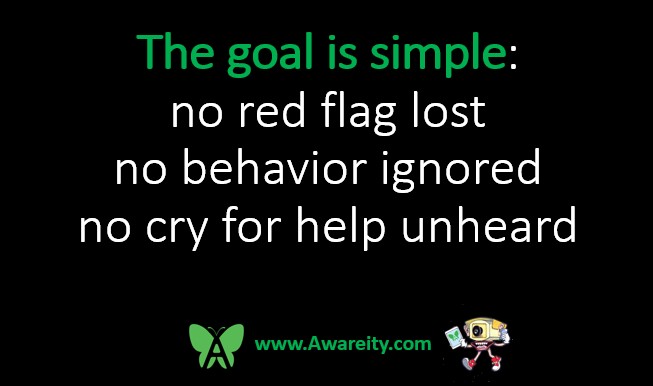
When tragedy strikes – a school shooting, a mass attack, or another act of evil – we always hear the same painful questions:
How could this have been prevented? Why didn’t someone say something? Why weren’t the warning signs connected?
The truth is, in nearly every case, the signs were there. Red flags were noticed. Concerning behaviors were seen. Family, friends, teachers, neighbors, law enforcement, mental health professionals, people on social media, and others observed/had pieces of the puzzle.
But the pieces never reached the right hands in time.
The “Forever Problems”
We call this the forever problems: hundreds of people may see something, and resources exist to help, but the pre-incident information isn’t collected, securely connected, or acted on before tragedy occurs.
It’s time to break this cycle. The conventional information sharing model is flawed and broken, and must be replaced with information connecting framework. Communities have a responsibility to build a pre-incident prevention framework that connects the dots and disrupts at-risk individuals and evildoers before they escalate to violence.
What Prevention Looks Like
This is not complicated. It starts with a community-wide framework where tips, concerning behaviors, and warning signs can be collected and routed securely to the right resources – whether that’s a school team, org team, city team, law enforcement, or another partner.
The goal is simple: no red flag lost, no behavior ignored, no cry for help unheard.
And this isn’t about surveillance. It’s about care and safety. Many who commit acts of mass violence were struggling long before they attacked. The difference between tragedy and safety is whether we connect the dots early enough to act.
Turning Police Shortages Into First Preventers
With police shortages nationwide, we can’t keep asking officers to “do more with less.” Pre-incident prevention allows us to rethink unfilled positions, empower community “First Preventers,” and expand community safety without adding new costs.
Imagine if, instead of always uncovering red flags after an attack, our community had the tools to see them before – and act when it mattered most.
A Call to Lead
Our community – and our Mayor – have a chance to lead the nation. Shifting from reaction to prevention will take courage, but the benefits are undeniable: safer schools, safer neighborhoods, fewer lives lost, saving millions of dollars, and more.
This is not a call for bureaucracy. It’s a call for smarter, connected community. It’s a call for real connections between city agencies, schools, businesses, and citizens. And it’s a call for leadership that prioritizes prevention over grief and headlines that always follow tragedy.
The Choice Before Us
The choice is simple: wait for the next tragedy and say “never again” – or act boldly now to prevent it.
We cannot bring back those already lost. But we can honor them by ensuring fewer families never endure the same preventable grief.
Let’s stop asking the hard questions only after lives are lost. Let’s start asking them now – together – before it’s too late.